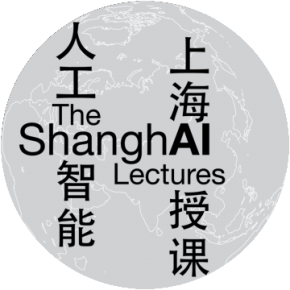
Robohub.org
ShanghAI Lectures: Auke Ijspeert “Controlling the Locomotion of Robots Using Central Pattern Generator Models”
 Animal locomotion control is in a large part based on central pattern generators (CPGs), which are neural networks capable of producing complex rhythmic patterns while being activated and modulated by relatively simple control signals. These networks are located in the spinal cord for vertebrate animals. In this talk, I will present how mathematical models and robots can be used as tools to get a better understanding of the functioning of these circuits. In particular I will present how we model CPGs of lower vertebrates (lamprey and salamander) using systems of coupled oscillators, and how we test the CPG models on board of amphibious robots, such as a new salamander-like robot capable of swimming and walking. I will also show how the concept of CPGs implemented as coupled oscillators can be a useful control paradigm for various types of articulated robots from snake to humanoid robots.
Animal locomotion control is in a large part based on central pattern generators (CPGs), which are neural networks capable of producing complex rhythmic patterns while being activated and modulated by relatively simple control signals. These networks are located in the spinal cord for vertebrate animals. In this talk, I will present how mathematical models and robots can be used as tools to get a better understanding of the functioning of these circuits. In particular I will present how we model CPGs of lower vertebrates (lamprey and salamander) using systems of coupled oscillators, and how we test the CPG models on board of amphibious robots, such as a new salamander-like robot capable of swimming and walking. I will also show how the concept of CPGs implemented as coupled oscillators can be a useful control paradigm for various types of articulated robots from snake to humanoid robots.
The ShanghAI Lectures are a videoconference-based lecture series on Embodied Intelligence run by Rolf Pfeifer and organized by me and partners around the world.
https://www.youtube.com/watch?v=cFL2GxVBWC4
 Guest talk in the ShanghAI Lectures, 2009-10-29
Guest talk in the ShanghAI Lectures, 2009-10-29
Auke Ijspeert is a SNF (Swiss National Science Foundation) professor at the EPFL (the Swiss Federal Institute of Technology at Lausanne), and head of the Biologically Inspired Robotics Group (BIRG). He has a BSc/MSc in Physics from the EPFL, and a PhD in artificial intelligence from the University of Edinburgh. He carried out postdocs at IDSIA and EPFL (LAMI), and at the University of Southern California (USC). Before returning to the EPFL, he was a research assistant professor at USC, and an external collaborator at ATR (Advanced Telecommunications Research institute) in Japan. He is still affiliated as adjunct faculty to both institutes. His research interests are at the intersection between robotics, computational neuroscience, nonlinear dynamical systems, and applied machine learning.
He is interested in using numerical simulations and robots to get a better understanding of the functioning of animals (in particular their fascinating sensorimotor coordination abilities), and in using inspiration from biology to design novel types of robots and adaptive controllers (see for instance Ijspeert et al, Science, 315(5817):1416-1420, 2007). He is regularly invited to give talks on these topics. With his colleagues, he has received the Best Paper Award at ICRA2002, the Industrial Robot Highly Commended Award at CLAWAR2005, and the Best Paper Award at the IEEE-RAS Humanoids 2007 conference. He is associate editor of the IEEE Transactions on Robotics, has acted as technical program chair of 5 international conferences (BioADIT2004, SAB2004, AMAM2005, BioADIT2006, LATSIS2006), and has been a program committee member of over 40 conferences.
The ShanghAI lectures have brought us a treasure trove of guest lectures by experts in robotics. You can find the whole series from 2012 here. Now, we’re bringing you the guest lectures you haven’t yet seen from previous years, starting with the first lectures from 2009 and releasing a new guest lecture every Thursday until all the series are complete. Enjoy!
tags: Algorithm AI-Cognition, bio-inspired, EPFL, ShanghAI Lectures 2009




